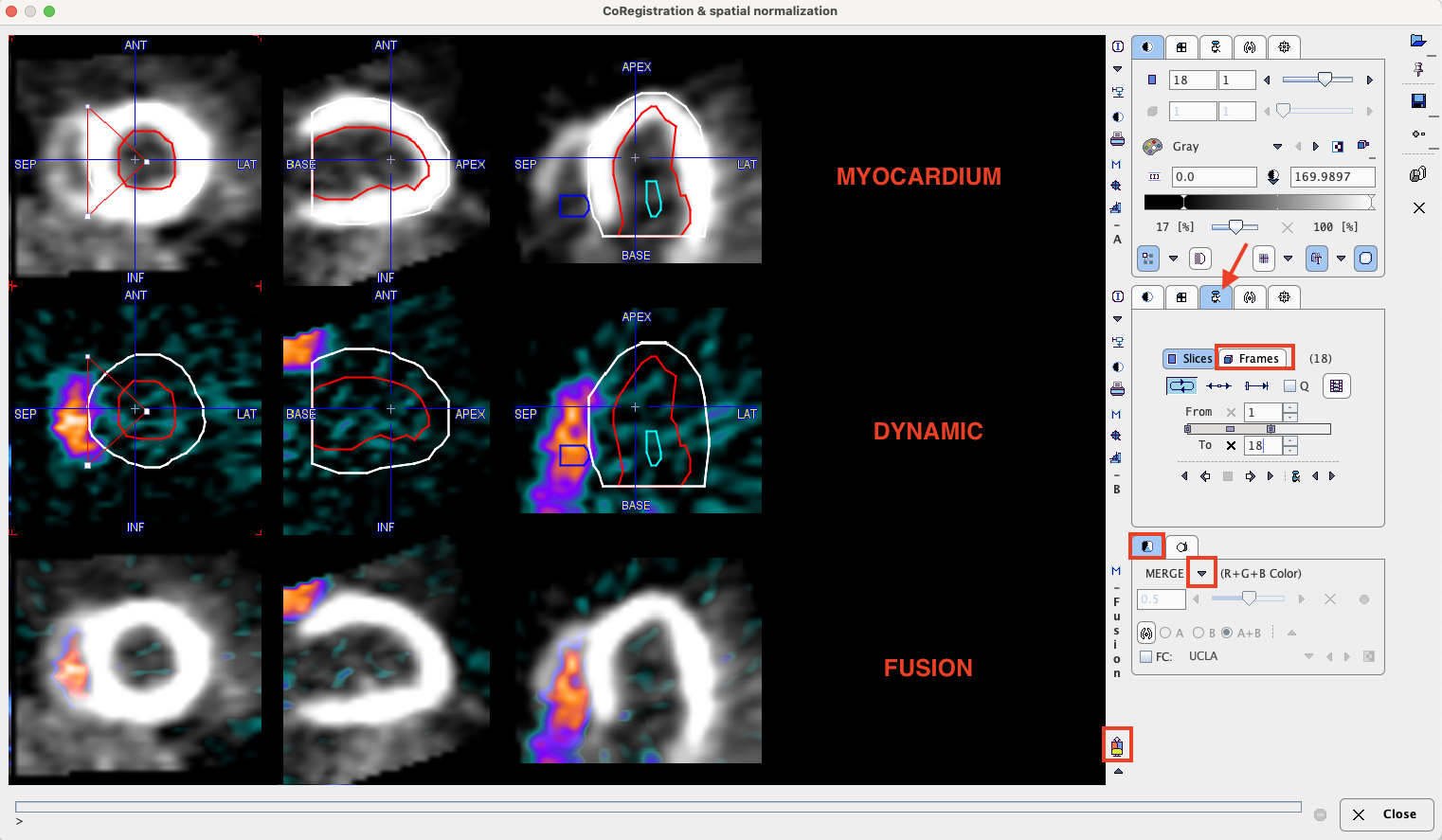Although PCARDP results in a quantitative summary of cardiac function, the user may sometimes want to investigate and visualize the results in more detail. If he has licensed the image fusion option (PFUS) and/or the 3D rendering option (P3D), he has versatile tools available which can be readily employed as outlined below.
Visualization of the Samples found by Polar Sampling (3D Option required)
The pixels found during the sampling process can be visualized together with the short axis images using the ![]() button. The option Heart 3D + Sampling points calls the 3D tool which renders the shape of the myocardium model together with the sampling points. The example below shows the sampling points as red spheres, the myocardium ENDO and EPI models as a blended solid surfaces with wired frame and a short axis slice of the anatomical images (myocardium) as thresholded contour.
button. The option Heart 3D + Sampling points calls the 3D tool which renders the shape of the myocardium model together with the sampling points. The example below shows the sampling points as red spheres, the myocardium ENDO and EPI models as a blended solid surfaces with wired frame and a short axis slice of the anatomical images (myocardium) as thresholded contour.

Note that if a sampling scheme with averaging has been selected, the neighbor points are not shown.
To learn more about the many possibilities exploring the data in P3D please refer to the PMOD 3D Rendering User Guide.
Fusion Display of all Data Sets
During processing, PCARDP calculates different types of data in the area of the heart. All of this data together with the VOIs can directly be loaded into the image fusion tool by the ![]() button. This tool has numerous flexible visualization options which are illustrated by the two examples below. Please refer to the User's Guide of the PMOD fusion tool to learn about the full capabilites.
button. This tool has numerous flexible visualization options which are illustrated by the two examples below. Please refer to the User's Guide of the PMOD fusion tool to learn about the full capabilites.
The illustration below shows how the dynamic images can be fused with the myocardium information. By playing a movie of the dynamic images over the acquisition duration the appearance and washout of the tracer can be observed and patient motion be detected.

Instead of fusing two images, the tool can also be switched to display three images in parallel, as illustrated below.
